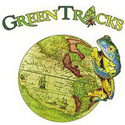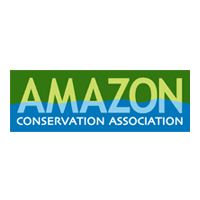I meant what I said
Last weekend I was in Seattle for the first Microcosm event. This event was sponsored by Tree Walkers International. The purpose of the show was to promote education through personal collections of life in glass boxes. Many people keep plants, fish, and amphibians (among many other organisms) in terraria and many of these people are quite educated and aware of the plight of these organisms in the wild. I was a guest speaker and my topic was conservation through travel. It is my belief that conservation needs a direct connection between the activist and the cause. Merely donating money to an organization leaves a void that prevents complete success. I advocate that people need to spend more time outdoors in order to better appreciate the interconnectedness of all life. People should explore the parks and preserves around their homes and states and more importantly in other countries, in order to better understand the issues that exist between people and the world they interact with. Because I don’t think conservation will truly be successful until we bridge the cultural gaps and address the associated problems various cultures face. Ultimately, conservation is about people. As a motivator I showed images of what I believe are some amazing animals and sights that I’ve been fortunate to see in my travels these past few years.
A bracket fungus glows in the light of a Cascades forest
I haven’t really added them up but I have probably travelled about half a million miles traveling around to see reptiles and amphibians. Don’t get me wrong my purpose was much broader than seeing just these animals. I want to see and experience everything I can when I travel. I want to see the plants, the animals, the people, taste the food, and even experience some of the hardships. I want to see and feel life well outside my own doorstep. While in Washington I spent a day in the field with some great friends. Forests of the Pacific Northwest are spectacular and home to some really cool herps. Unfortunately, I really wasn’t feeling the photography my one day out and I didn’t capture a good representation of what I saw. I hope you realize this blog will cover as much about my photographic failings as it will my successes when it comes to trying learn more about the creepy things around us. Mike Ready captured some stunning pictures of tailed frog tadpoles (Ascaphus truei) – made me jealous. My loss.
A southern long-toed salamander, Ambystoma macrodactylum
This weekend I abandoned my duties around the house and headed up to the Sierra Nevada in search of some new species of amphibians for me. In the early dark of Saturday morning (I really got to find a way to do this photo thing while sleeping in) we loaded up the car and made our way up the mountains. We have had a pretty mild weather year and the foothills showed it. Instead of parched and bleached, the rolling hills of oak were golden in the early morning light. We made our way through the pine forests and got to our destination at near 10,000′ before noon. The scenery was stunning, but then again the Sierra is always stunning. Translating what I saw and what I’d like to show is my problem. The sun was high overhead and the skies were a solid blue. Pretty to look at but boring on a two-dimensional image. To make matters worse there was a slight haze in the air so getting in some scenic photo practice was going to be out unless I got some afternoon storm clouds. We embarked a short hike through talus slopes and squeaking pika towards a small alpine lake – or would that be a pond?
An alpine pond at near 10,000′ is home to a number of threatened amphibians.
I discovered lots of Pacific chorus froglets (Pseudacris regilla) around the waters edge but none of the amphibians or snakes on my list. Continuing on we followed the dry bed of very temporary spring creek where I saw a nice size plank of a near decayed tree. Carefully lifting it I found one each of two of my target species – the threatened Yosemite toad, Bufo (now Anaxyrus) canorus, and the southern long-toed salamander, Ambystoma macrodactylum. I took a few shots of the very uncooperative animals and returned them to their hidden retreat. A few hundred yards on we came to another smaller pond. This one felt more pond like that than the first. It lacked the stock trout that many of the Sierra alpine lakes contain and that is a good sign for my third target species. Looking into the water I could see many more chorus frog tadpoles, most nearing metamorphosis.
The threatened Yosemite toad, Anaxyrus canorus
But there also I could see tadpoles 5 times as large – those of the Sierra yellow-leg frog, Rana sierrae. The yellow-leg frog, like the red-legged frog, is one of our native ‘true’ frogs and is in serious danger. There is a small isolated population of the foothills yellow-leg frog (Rana boylii) near my home. The southern population of the mountain yellow-leg frog, Rana muscosa, is seriously facing extinction so seeing these frogs is a treat. Getting decent photos, like most amphibians, is a tricky maneuver and an exercise in frustration. As I walked around the pond I located over a dozen more of the long-toed salamanders and many sizes of the yellow-legs. I examined the small drying rivulets that feed the pond and located just one more toad. A sign that this spring’s toadlets are already dispersing for cover and preparing for the long cold winter up here. I also discovered a disheartening sight – in a small trickle I saw about a dozen dead and decaying tadpoles. A few feet away lay a dead juvenile yellow-leg frog. Animals die all the time, life is harsh, but the sight of dead frogs is particularly scary. Habitat destruction is still the primary cause of amphibian declines but recently a deadly chytrid fungus has been implicated in the declines and potentially extinction of many populations of frogs. It has turned up in the Sierra. Were these deaths before me simply some animals that couldn’t make it or are they the harbingers of a sweeping pandemic? I try not to get to melodramatic over life and death struggles – another occupational hazard – but it is difficult not to think of worse case scenarios of entire populations of frogs being wiped out. One could walk the entire perimeter of this pond in minutes. Despite the idyllic scene its life exists precariously like many of the granite boulders jutting out from sheer cliff edges up here. One trigger and it can all come crashing down.
Also threatened is the Sierra yellow-leg frog, Rana sierrae
A juvenile yellow-leg frog lays dead in a rivulet along with decaying tadpoles – cause of death unknown.
I didn’t get my afternoon clouds so we eventually made our way down the east side to the small town of Lee Vining on the shore of Mono Lake. A nice shower, a late dinner, and some much needed sleep came too quickly. At 5am I got up with the intent of shooting the scenic tufa formations and some birds. However, a quick glance outside and I saw a sky of black dotted in crystal stars. No clouds. I’ve yet to visit Mono with a cloudy dramatic sunrise. The sun rising over the Great Basin desert comes quick and harsh. It takes skill greater than I have to make good, and new, scenic photos of Mono in the morning. I conceded a lazy defeat and returned to bed. I consoled myself that photography is just my hobby and resigned to a slow awakening assisted with a couple cups of coffee. I regretted not trying for the migratory phalaropes that should have been feasting at the lake shores but this was a short weekend so we got back in the car making our way up and westward. Choosing a different route home I stopped at a location for my last amphibian species of the weekend. We made a short stop and hike to the spray zone that is home to the Mt. Lyell web-toed salamander, Hydromantes platycephalus. These salamanders make their home in the cracks and crevices formed in splintering granite talus. During the spring and summer thaw they make their way towards the surface keeping moist in the near freezing water spray. In the winter months, which can be half the year, they retreat deeper into the earth. I only spent 5 minutes shooting the one adult I found, and was pleased to find that they are as uncooperative as ever. I returned him to his rock and returned to the car.
My last amphibian species of the weekend, the Mt. Lyell web-toed salamander, Hydromantes platycephalus
I drove about 600 miles over the day and a half. Logic tells me not to calculate the expense. I long ago gave up converting herp sightings into a expense sheet. Budgeting a heroin addiction would make more sense. I saw 5 amphibian species, not bad, especially since 3 of them were new to me. There were a couple snake species I hoped to see but I was about a couple months late for peak activity. With more time I could have grabbed a couple more salamander species but they wouldn’t be new and time was short. I am not really happy with the shots I got. They are ok, I guess. I am having a tough time getting good lighting to define salamanders without losing them to the background. They tend to keep their heads down which makes getting good eye shots tough. And the damn things won’t sit still. And highlights! Wet amphibs bring ’em out. I’m not about to try polarized lights and lenses in the field so I gotta live with the highlights. As it was seeing the ponds and difficult lives these animals lead was another connection I needed. Seeing a dead frog in a stream firsthand is much more than a statistic or an alarm for conservation. Just as this story could only mean so much to you I encourage you to get outside and see for yourself what is out there.







No comments